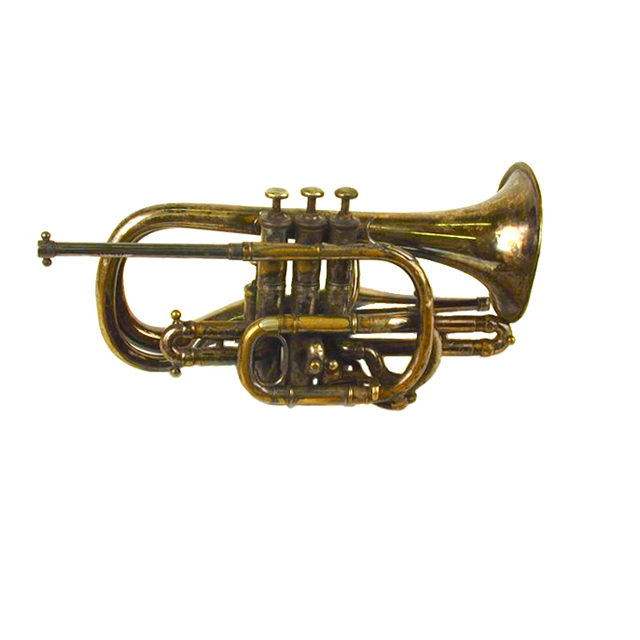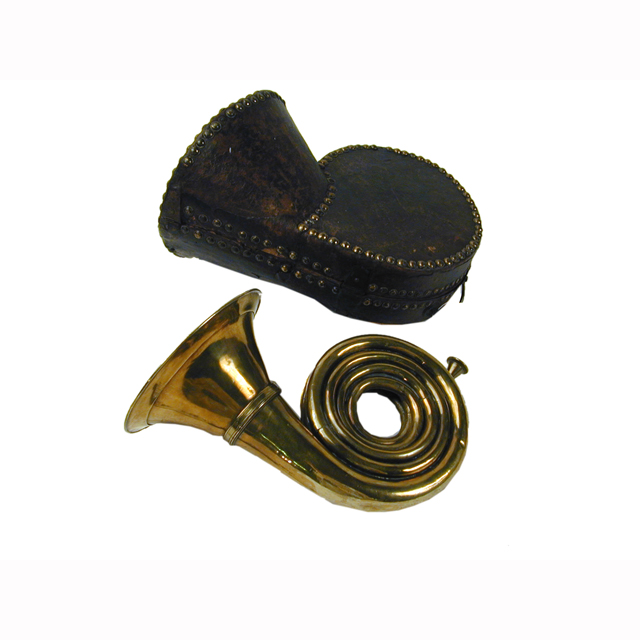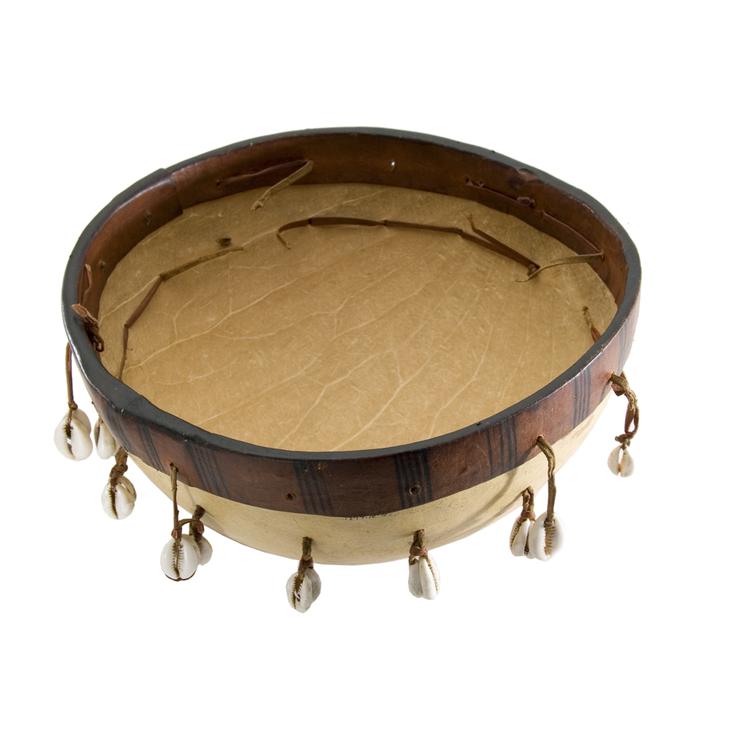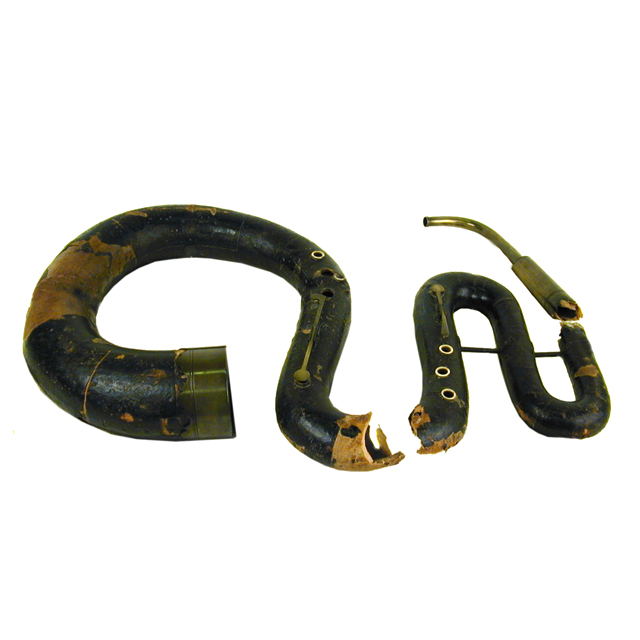
Kisfejes citera box zither. The instrument consists of an open-bottomed box with one long and one short side straight, the other long side is cut into four equal steps. There are tuning pegs and hitch pins for 18 strings. Two strings are attached to each of the steps, and six more are attached to the right-hand division of the scroll; these 12 are intended to be played as open strings. From the left-hand division of the scroll, two triple courses travel over two sets of frets. The frets nearest to the players gives two octaves of a diatonic major scale with an additional descent to the lower dominant. The other set gives a two octave pentatonic 'black Note' pattern starting with the lowest fret, and having an extra note at the top. The open string sounds a semitone lower than the lowest fret. The strings are of wire. The wood is stained red. Each of the steps has a horse's head finial, and a finial of two horses' heads is attached to each of the divisions of the scroll (7 heads in all). Two soundholes, one is lyre-shaped and the other is made of a pattern of slots and dots.


































































































































































































































































































































































































































































































































